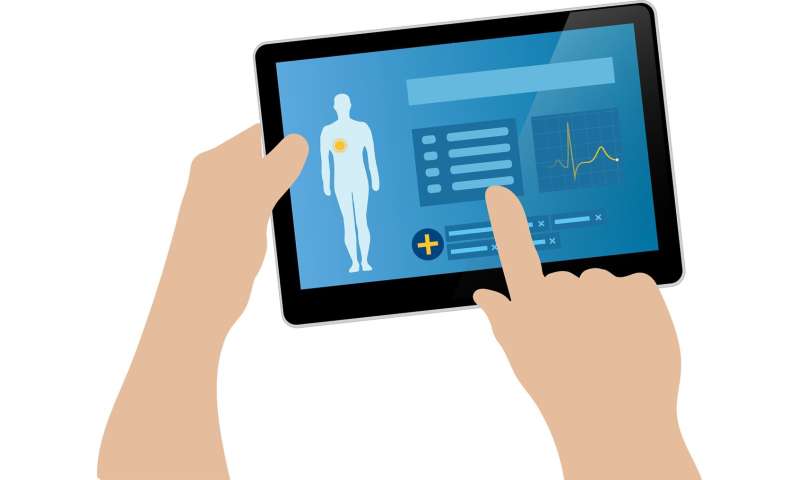
A new report from cardiologists at UT Southwestern raises the hope that doctors will be able to visually check the jugular venous pressure of heart failure patients remotely, using the camera on a smartphone. The finding is especially timely as telemedicine expands during the pandemic.
The jugular venous pressure assessment, which provides insight into fluid retention and increased pressure inside a heart, usually requires a trip to the doctor’s office for a visual check of the jugular vein in the neck.
“It is one of the most important and common approaches to assess the fluid status of such patients,” says Mark Drazner, M.D., clinical chief of cardiology at UT Southwestern and senior author of the research letter published today in JAMA Cardiology.
The ability to perform this test using telemedicine could mean fewer trips to the physician for sometimes frail heart failure patients, Dr. Drazner says, and could allow doctors to perform more frequent checks.
In addition, with some patients delaying in-person doctor visits because of COVID-19, the ability to perform the test via telemedicine could be a lifesaver, says Jennifer Thibodeau, M.D., interim section chief of Advanced Heart Failure, Transplant, and LVAD. “Patients who are not evaluated because of fears of COVID-19 may be putting themselves at risk. Being able to evaluate a patient with heart failure effectively and virtually allows us to seamlessly continue the care of patients with heart failure during this pandemic.”
“I think the heart failure community is going to be quite interested in this,” adds Dr. Drazner.
During a jugular venous pressure assessment, a physician or other health care provider checks the distention of the jugular veins in the neck to determine how high blood is rising within the veins.
As pressure inside an unhealthy heart’s right atrium increases, the height of the jugular venous distention will rise, Dr. Drazner explains. That level can be checked by looking at the patient’s neck, “much like checking the oil dipstick in a car,” he says.
A reading at or above 10 millimeters Hg of jugular venous pressure is considered cause for concern, Dr. Drazner says, and may indicate too much fluid buildup in the body.
For the study, advanced heart failure and transplant cardiologists performed jugular venous pressure assessments both in person and remotely via smartphone video apps on 28 heart failure patients, with an on-site assistant helping position the smartphones for patients.
The study found that the in-person and remote assessments often agreed and that they also correlated to the right atrial pressure when measured invasively.
Specifically, the remote and bedside estimates on whether the level was less than, at, or above 14 centimeters (considered to correspond to 10 millimeters Hg pressure within the heart) agreed 95 percent of the time, according to the report.
The investigators also compared their assessments to the actual right atrial pressure as measured by invasive heart catheterization. The in-person assessments and catheter readings agreed 93 percent of the time when the results were at the concerning level, while the remote assessments and invasive measurements agreed a slightly lower 89 percent of the time, according to the report.
The study was started before the emergence of COVID-19, Dr. Drazner says, but the results have become more timely given current concerns over the deadly virus and the rapid shift to telehealth.
Source: Read Full Article
